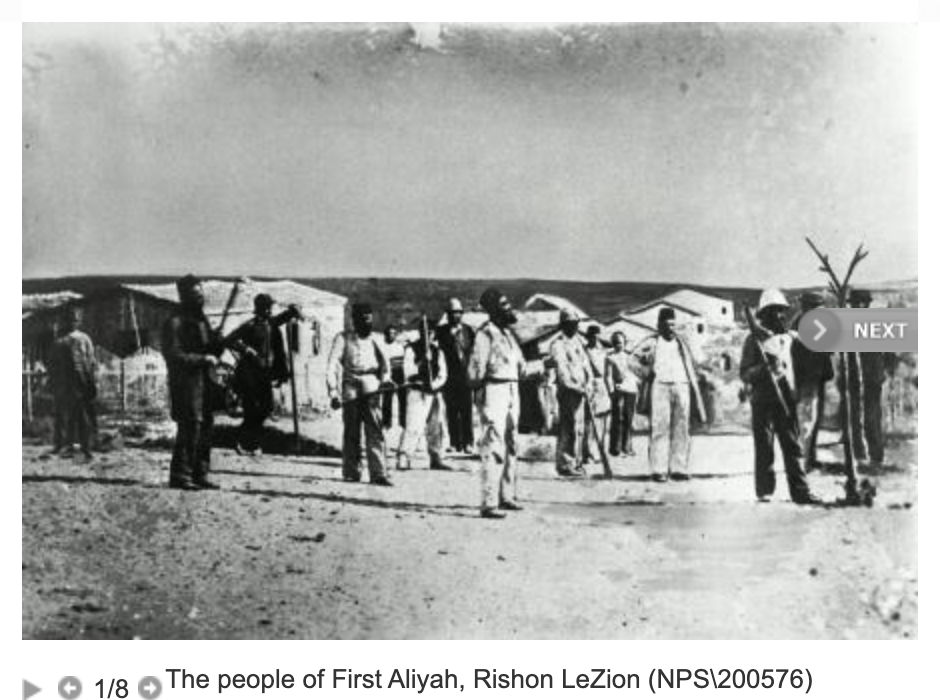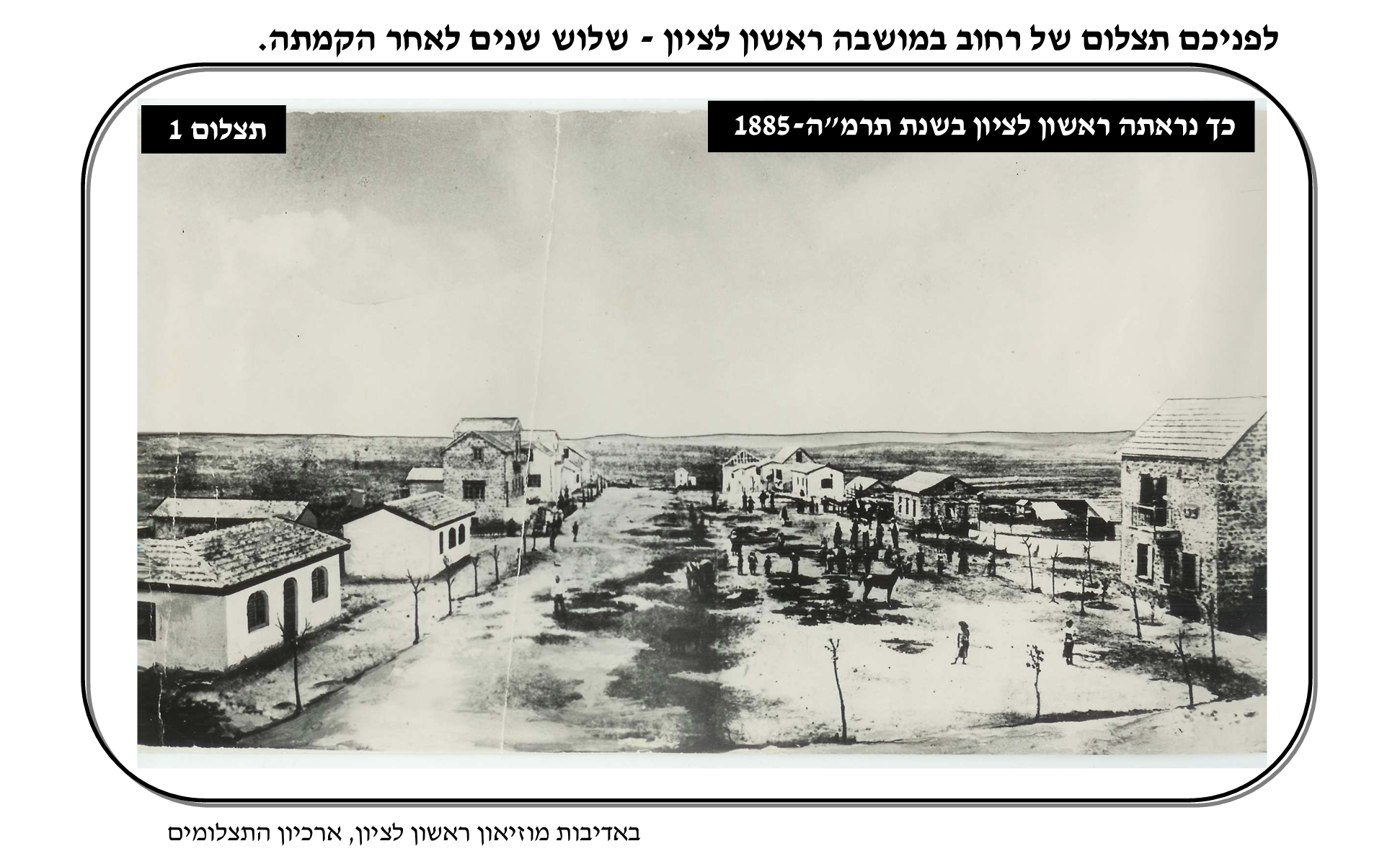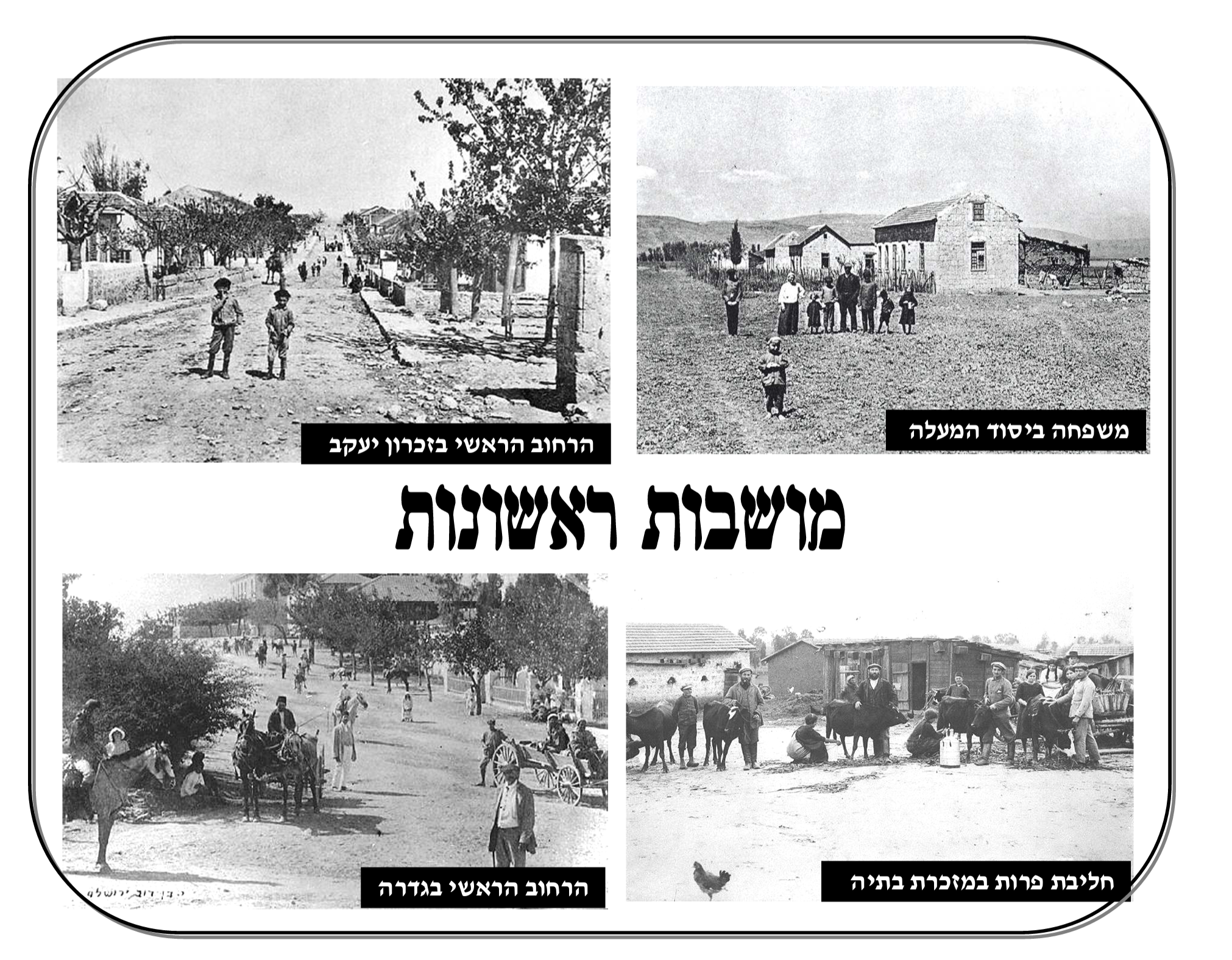This post is a collection of archival photographs and videos that document Pre-State Israel’s development in the 19th and 20th century (before 1948).
You can get a more complete overview of the history of Zionism here: Zionism MindMap.
The modern-day revival of the Jewish national home in the land of Israel started around 1881/1882 and was called The First Aliyah. The word Aliyah (Ascension) stands for the Jewish return to the Land of Israel.
To see the timeline in context, please refer to my other blogs, especially the MindMap of Zionism and Israel.
The first video footage I could find is from 1911, but still photos exist from the 1880’s and onward.
1880-1910
Some of the earliest photos from the 1880’s can be found in the Zionist Archives. This photo is from the founding of Rishon LeZion in 1882 (today a bustling city in Israel).
Just 3 year later, in 1885, Rishon LeZion already looked like a small town:
Other early towns and villages included (clockwise from top left): Zichron Yaakov (1882), Yesod Hama’ala (1882), Mazkeret Batya (1883), Gedera (1884), and others.
1911
The first video clip I could find is a 20 minute long silent film from 1911: “Scenes of the Holy Land” by Murray Rosenberg. It shows the preparations for the building of the Technion (which officially started in 1912), early agricultural revival of the land, an Arab village around a well, Ottoman leaders working with the Jewish community, festivities at the sea of Galilee, school scenes, Jewish laborers working the land, Christian pilgrims on Palm Sunday, Ottoman soldiers guarding Jerusalem, early theater and orchestra performances, Jews praying at the Western Wall, and more.
1919-1920
The San Remo conference in 1920 and British Mandate of 1922 resolved:
“Whereas recognition has been given to the historical connection of the Jewish people with Palestine and to the grounds for reconstituting their national home in that country.”
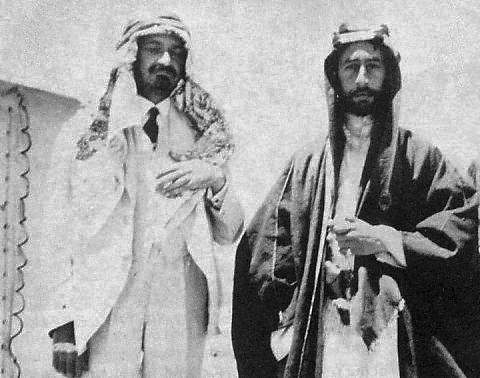
“…All necessary measures will be taken to encourage and stimulate immigration of Jews into Palestine on a large scale, and as quickly as possible to settle Jewish immigrants upon the land through closer settlement and intensive cultivation of the soil. In taking such measures the Arab peasants and tenant farmers shall be protected in their rights, and shall be assisted in forwarding their economic development.”
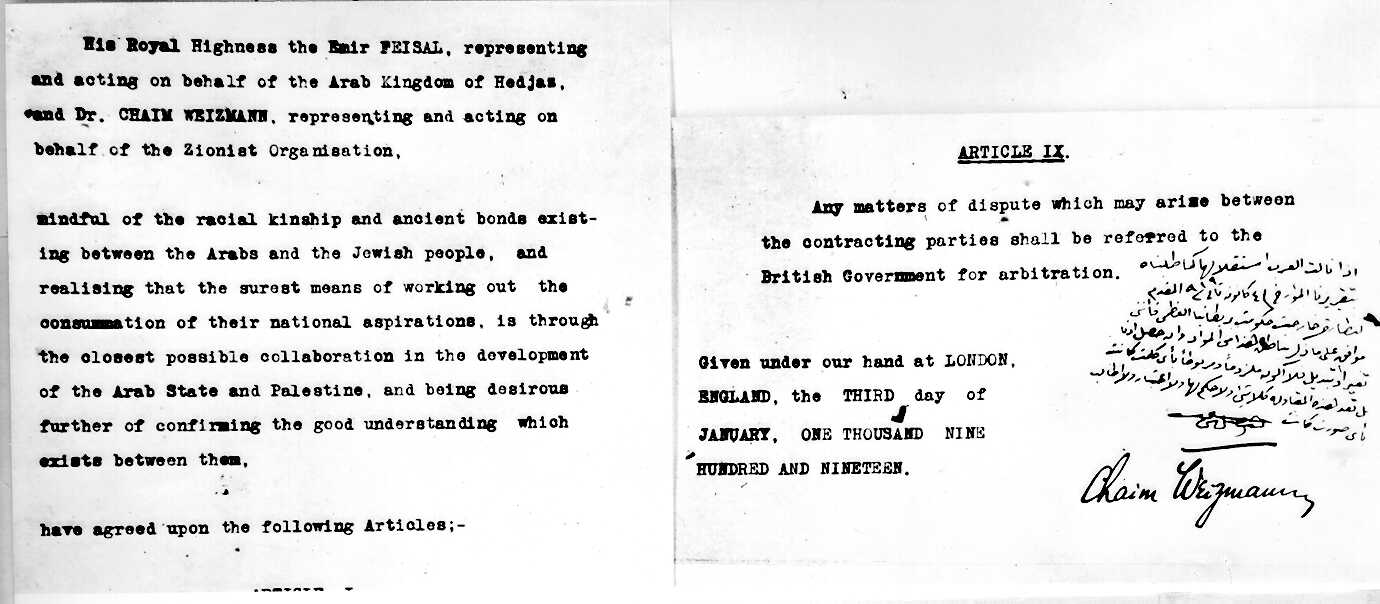
1924
The next film is from 1924 and is called “Banim Bonim (the children of the land build it up) – Land Of Promise”. It is 41 minutes in length and has some dramatic piano music like other silent films of its day. It follows Jewish immigrants from their arrival, shows how developed some villages and towns have become in terms of building, education, agriculture, culture, universities, exports, tourism and industry.
1928
This 1-minute film from 1928 shows the inauguration of the Balfour forest near Jerusalem commemorating Lord Balfour (the author of the Balfour Declaration).
1929
The next film clip is very difficult to watch. It shows the aftermath of the Arab Riots of 1929. It’s a 14-minute silent film from 1929, and Youtube does not allow embedding it, so you have to watch it on Youtube.
1930
The following 9-minute silent film is from 1930. It shows an Orphanage called Kfar Yeladim which operated from 1923-1931. It shows the British soldiers guarding the village as well as the many activities of the children indulging in education, sport, gym, prayer, agriculture and music.
1932
The following 5-minute film shows the Levant Fair in 1932. This area, called Ganei HaTa’arucha, still exists in Tel Aviv today.
1934
The following 4-minute video from 1934 is the first Hebrew-speaking film clip. It is a news report of a flood that occurred in the city of Tiberias near the Sea Of Galilee in 1934 as a result of heavy rains.
1935 – The Land Of Promise
The first hour-length English film I found is from 1935 called “The Land Of Promise”. It shows the full extent of the development of Pre-State Israel as a de-facto state-of-the art modern country. It shows fully developed cities, towns, Kibbutz (communal agricultural settlements), newspapers, universities, orchestras, theater, electric grid, water transport, industry and all the makings of a modern state.
At 25:00 minutes into the film, it shows composer Daniel Samburski singing his famous song Shir Ha’Emek – song of the valley (of Jezrael). At 41:00 minutes in you can watch the opening ceremony of the opening of the Hebrew University in Jerusalem. The orchestra and chorus perform Haydn’s Oratorio “The Creation – Be’Reshit” in Hebrew in Jerusalem for the first time, reciting the opening words of the Hebrew Bible.
1938
The first color film I could find is a 4-minute clip from 1938 showing scenes from the bustling city of Tel-Aviv. Here you can see a modern city in the making, with tall buildings, bikes, cars, buses, people working and enjoying Shabbat. It also shows the Carmel market which is still a tourist attraction today.
1939
“Collective Adventure” is a 28-minute color film in English from 1939. It shows how the Arab neighbors were mostly welcoming of Jewish settlement activity, while other Arab rioters tried to attack the new villages as soon as they were created. This period was known as the Tower-and-Stockade period, where Jewish settlements had to be entirely built up in one day, complete with a surrounding wall and tower, otherwise they could not be defended against attackers.
“Springtime in the Holy Land” is another 15-minute full-color English movie from 1939. It shows scenes from around the country, and some nice footage from the Western Wall in Jerusalem, and from Haifa.
1942
“Health for Victory” was made in 1942 to showcase how the Hadassah Medical Organization provided health care in pre-State Israel during WW II.
1947
The following 1947 silent film shows Jewish pioneers settling the barren Negev desert, turning wasteland into thriving towns and villages:
“Behind the Blockade” is a 26-minute full-color English film from 1947 showing scenes from the life of Jews and cooperation with Arabs in pre-State Israel as Holocaust survivors try to enter the land in spite of the British blockade against Jewish Immigration:
Another film from 1947 called “Birthday of a Prophecy” shows more scenes of building up pre-State Israel ahead of the declaration of Independence:
Fast Forward to… “Israel Inside”
After 73 years of independence, Israel today is a modern marvel. Zionism has fulfilled its promise of returning a native people to its native land. Decolonizing the land from the empires that ruled it for centuries, and restoring its language and culture by its original indigenous people. In spite of countless wars and aggression by its much larger neighbors in the Middle East, Israel has not only persevered, but turned itself into a successful hub of technology, culture, literature, film, art and music.
Watch this 10-minute film made in 2013 by Positive Psychology icon Dr. Tal Ben Shahar.
More Resources
For more information about Zionism and the Arab-Israeli conflict, please see my Zionism and Israel – Historical Learning Resources. It has a list of recommended books, historical video clips, organizations, articles and maps to help you navigate this complex topic.

